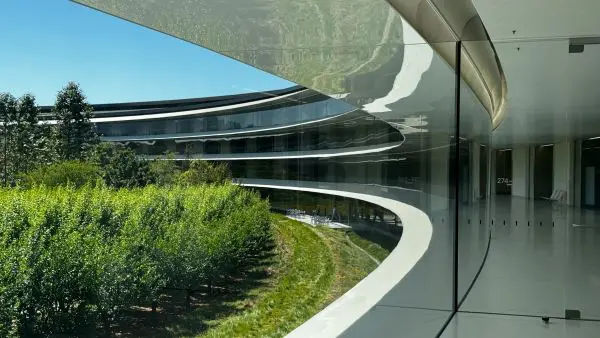Groundscrapers: why architects are turning skyscrapers on their side
Posted on: 25 November, 2024

Does the rise of the groundscraper signal the end of high-rise towers and skyscrapers? Here’s why buildings are becoming flatter and wider.
With all of the technological advancements we’ve seen in the design and construction of buildings over the last hundred years, you might think that new designs for our infrastructure would be getting taller.
This is the case to some degree – the Jeddah Tower, currently under construction in Saudi Arabia, will be the tallest building in the world when it’s completed, standing at over 1 kilometre (3,281 ft). Similarly, Merdeka 118, completed in 2022, is the tallest building in Malaysia and Southeast Asia.
However, a new type of ‘scraper’ is also emerging in the built environment. Groundscrapers are taking the concept and scale of the traditional skyscraper and turning them on their side.
Here are a few examples from around the world, why they’re becoming increasingly common in the built environment.
What are groundscrapers?
Groundscrapers are large buildings that have few storeys but extend for large horizontal distances. In essence they’re the opposite of a skyscraper, and are often referred to as ‘sidescrapers’ or even ‘landscrapers’.
Groundscrapers were thrust into the spotlight in 2022 after Google announced its new £1bn, one million sq ft HQ in London. However, this urban design concept has been around for many years, with the Pentagon often being cited as an early example, along with Chicago’s Merchandise Mart.
What are the benefits of groundscrapers?
Some of the reasons we’re seeing less skyscrapers and more groundscrapers include:
Reduced construction costs
Lower buildings easier and cheaper to build than skyscrapers for a number of reasons. Firstly, they have enough strength without requiring specific materials to ensure their integrity and withstand heavy winds. They also need less materials in their construction than high-rise towers.
Skyscrapers get more and more expensive the taller they are, as they require expensive equipment to construct.
Energy efficiency and sustainability
The design of groundscrapers offers benefits in terms of sustainability, too. It’s far easier to control temperatures in lower-level buildings than towers, meaning they consume less energy and subsequently have a far lower carbon footprint.
Room for green spaces
Horizontal buildings can more easily incorporate green spaces and elements of biophilic design. This can provide a variety of benefits for a building’s occupants, tenants and end users, from health benefits and reducing urban temperatures to improving air quality and encouraging physical activity.
Learn more: Green infrastructure, defined: how could it help us solve the climate crisis?
Safety and evacuation
With the emphasis the built environment now places on building control in the wake of disasters like Grenfell Tower, reducing the height of buildings can help reduce evacuation times in the event of an emergency. There are also likely to be more places where people can exit the building.
What’s more, these buildings have a better chance of withstanding natural disasters like earthquakes, and can provide more accommodating environments for people with accessibility needs and foster the creation of inclusive spaces.
The disadvantages of groundscraper design
The idea of moving away from high-rise buildings isn’t without its potential drawbacks:
The cost of land
While the equipment required to build a shorter, horizontal building will be cheaper, construction firms and building owners will have to spend more on securing the necessary land to house the project.
Difficult to place them in cities
Aside from examples like Google’s new HQ, for the most part it’s difficult to imagine this concept working in many large cities. These locations are already suffering from urban sprawl and overcrowding, so building large horizontal structures is unlikely to fit in with plans for these cities.
A potential loss of architectural creativity
A horizontal building by no means has to be boring and bland, but they won’t be able to offer the same avenues for creativity and inspiration that we’ve grown accustomed to with high-rise towers.
5 examples of groundscrapers
1. Google HQ, London, UK
Google’s aforementioned new headquarters in London are the first wholly owned and designed structure by the tech company outside of the USA.

2. Apple Park, California, USA
In California, the headquarters of another American tech giant are also an example of this concept. Apple’s corporate offices are a striking example of biophilic architecture and the possibilities of groundscraper design.
3. Lingotto, Turin, Italy
Once the headquarters of Italian car company Fiat, the Lingotto complex has today been repurposed as a mixed-use development. One of the oldest groundscrapers on this list, the Lingotto was completed in 1922
4. Pentagon, Virginia, USA
The Pentagon is one of the most famous examples of the groundscraper concept, with its design being commissioned over a skyscraper model due to the high costs of steel at the time.
 5. Merchandise Mart, Chicago, USA
5. Merchandise Mart, Chicago, USA
The Merchandise Mart is an early example of the groundscraper from the 1930s. With a floor area of over 372,000 sq metres, it was almost 50% bigger than the Empire State Building.
Is it time we abandon the skyscraper?
There have been calls in recent years for London to follow New York in banning the construction of glass and steel skyscrapers. This signals a sea change in how structures are designed, and poses the question of whether tall buildings and high-rise are compatible with a sustainable built environment.
Iconic skyscrapers like the Empire State Building, the Shard and the Burj Khalifa have inspired generations of architects over the past century, but with the built environment facing new challenges in the form of the climate crisis, they may become a thing of the past.



 5. Merchandise Mart, Chicago, USA
5. Merchandise Mart, Chicago, USA

